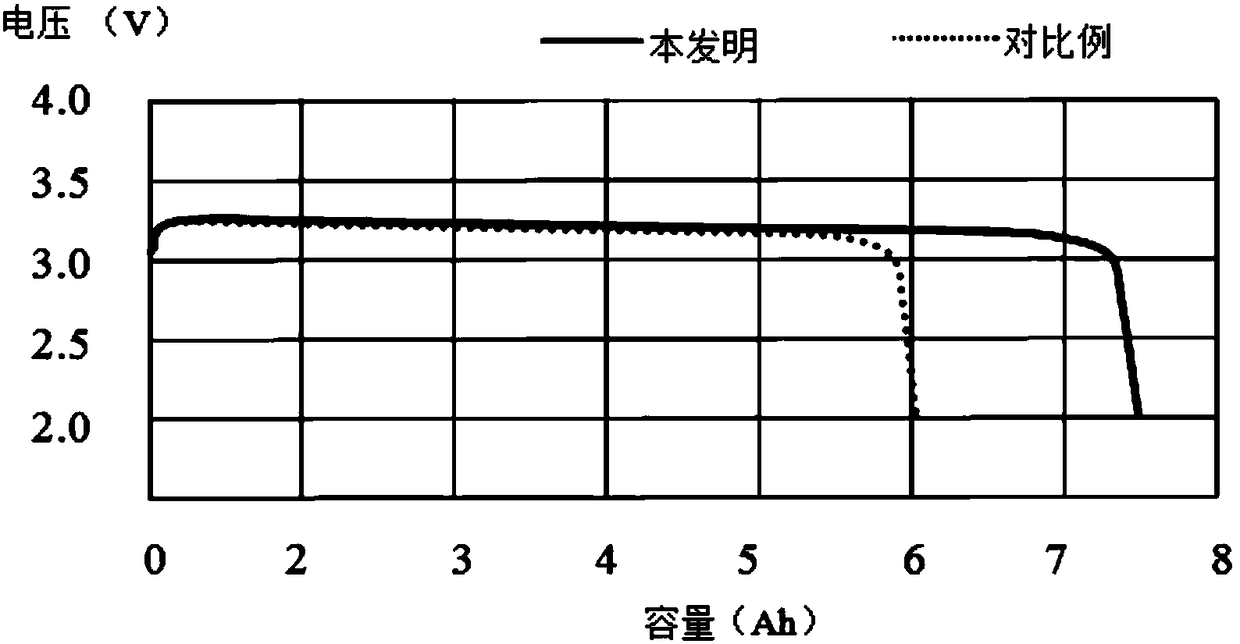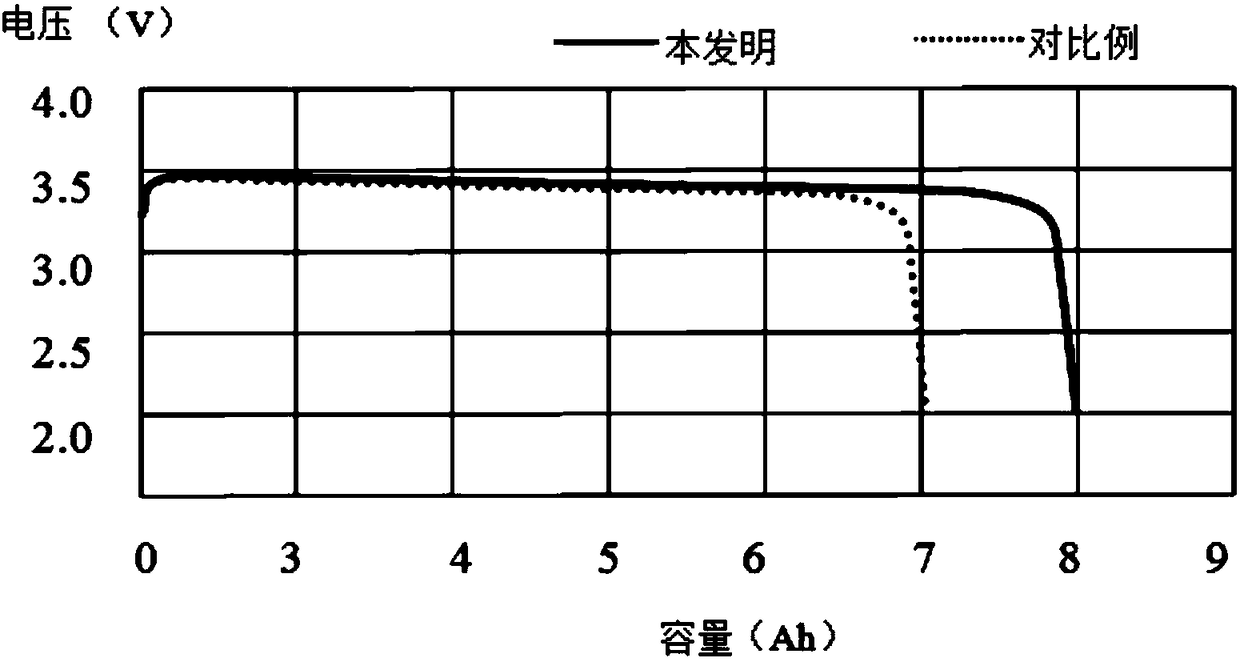Preparation method of lithium thionyl chloride carbon electrode pellet material
A lithium thionyl chloride carbon and pellet technology, which is applied to battery electrodes, circuits, electrical components, etc., can solve the problems of insufficient utilization of inner pores, reduced utilization rate of carbon electrodes, uneven discharge performance, etc., to improve capacity. The effect of output capacity, utilization rate improvement, manufacturing process and parameter optimization
- Summary
- Abstract
- Description
- Claims
- Application Information
AI Technical Summary
Problems solved by technology
Method used
Image
Examples
Embodiment 1
[0038] The preparation method of lithium thionyl chloride carbon electrode pellet material, the steps are:
[0039] 1) and powder
[0040] Weigh 10kg of acetylene black, 10g of water-soluble graphene, 1g of platinum-carbon catalyst (precious metal content 1-10wt%), 1050g of PTFE emulsion adhesive (solid content 60%) according to mass ratio 100:0.1:0.01:10.5:400, Pure water 40kg (conductivity≦10uS);
[0041] Slowly add acetylene black into the blender, then add platinum carbon catalyst and sprinkle it evenly in the blender for 300 seconds, add 20kg of pure water into the blender for semi-dry blender for 120 seconds, spray liquid while stirring;
[0042] Tetrafluoroethylene emulsion, water-soluble graphene, and the remaining 20kg of pure water are stirred at 1000 rpm for 60 seconds to form a mixed solution, and the mixed solution is added to a powder mixing machine for 180 seconds to form a wet material;
[0043] 2) Shot blasting and shaping
[0044] Extrude the wet material ...
Embodiment 2
[0047] The preparation method of lithium thionyl chloride carbon electrode pellet material, the steps are:
[0048] 1) and powder
[0049] Weigh 10kg of acetylene black, 25g of water-soluble graphene, 3g of platinum carbon catalyst (precious metal content 1-10wt%), 1.5kg of PTFE emulsion binder (solid content 48%) according to mass ratio 100:0.25:0.03:15:440 , pure water 44kg;
[0050] Slowly add acetylene black into the blender, then add platinum carbon catalyst and sprinkle it evenly in the blender for 320 seconds, add 33kg of pure water into the blender for semi-dry blender for 150 seconds, spray liquid while stirring;
[0051]Tetrafluoroethylene emulsion, water-soluble graphene, and the remaining 11kg of pure water were stirred at 1500 rpm for 75 seconds to form a mixed solution, and the mixed solution was added to a mixing machine for 200 seconds to form a wet material;
[0052] 2) Shot blasting and shaping
[0053] The wet material is extruded through an extrusion mac...
Embodiment 3
[0056] The preparation method of lithium thionyl chloride carbon electrode pellet material, the steps are:
[0057] 1) and powder
[0058] Weigh 10kg of acetylene black, 40g of water-soluble graphene, 5g of platinum carbon catalyst (precious metal content 1-10wt%), 1.2kg of PTFE emulsion adhesive (solid content 63%) according to mass ratio 100:0.4:0.05:12:420 , pure water 42kg;
[0059] Slowly add acetylene black into the blender, then add platinum carbon catalyst and sprinkle it evenly in the blender for 360 seconds, add 25.2kg of pure water into the blender for semi-dry blender for 180 seconds, spray liquid while stirring ;
[0060] Tetrafluoroethylene emulsion, water-soluble graphene, and the remaining 16.8kg of pure water are stirred at 2000 rpm for 90 seconds to form a mixed solution, and the mixed solution is added to a powder mixing machine for 220 seconds to form a wet material;
[0061] 2) Shot blasting and shaping
[0062] The wet material is extruded through an ...
PUM
| Property | Measurement | Unit |
|---|---|---|
| particle size (mesh) | aaaaa | aaaaa |
Abstract
Description
Claims
Application Information
 Login to View More
Login to View More - R&D
- Intellectual Property
- Life Sciences
- Materials
- Tech Scout
- Unparalleled Data Quality
- Higher Quality Content
- 60% Fewer Hallucinations
Browse by: Latest US Patents, China's latest patents, Technical Efficacy Thesaurus, Application Domain, Technology Topic, Popular Technical Reports.
© 2025 PatSnap. All rights reserved.Legal|Privacy policy|Modern Slavery Act Transparency Statement|Sitemap|About US| Contact US: help@patsnap.com



